Fallingwater, designed by the famous American architect Frank Lloyd Wright in 1935, is a remarkable architectural landmark. Fallingwater was conceived as a weekend home for the Kaufmann family, integrating with a 30-foot waterfall. The architectural style prominently showcased in Fallingwater is Organic Architecture, a concept developed and refined by Frank Lloyd Wright. The house grows organically from its site, using local sandstone and other materials quarried from the surroundings. Wright employed several structural engineering principles to realize his visionary design. Steel reinforcement within the concrete terraces and embedded vertical steel columns supported the dramatic extensions. Fallingwater’s impact on the design of other buildings in Pennsylvania is profound. Wright’s innovative use of materials, particularly reinforced concrete and steel, has inspired architects to experiment with cantilevers and modernist motifs. Maintaining Fallingwater presents ongoing challenges, particularly concerning the structural integrity of the cantilevers and the effects of moisture and flooding. Preservation efforts involve continuous monitoring, periodic repairs, and waterproofing measures to ensure the longevity of this iconic structure. Fallingwater’s cultural and contextual relevance is evident in its adherence to Frank Lloyd Wright’s organic architecture concept. Fallingwater offers specialized tours catering to architects and architecture enthusiasts. These tours provide in-depth insights into Wright’s design philosophy, technical aspects of construction, and customization for architecture-focused groups. Pennsylvania boasts several architectural landmarks, with Fallingwater as a prime example. Independence Hall and the Eastern State Penitentiary showcase early American architectural treasures in Philadelphia. In Pittsburgh, the Carnegie Museum of Art and Frank Lloyd Wright’s PPG Place contribute to the state’s architectural diversity. These landmarks collectively offer a rich tapestry of American architecture spanning over 300 years for architects to study and appreciate.
What is the Fallingwater?
Fallingwater is a house designed by notable American architect Frank Lloyd Wright in 1935. It was built as a weekend home for Pittsburgh businessman Edgar Kaufmann Sr., his wife Liliane, and their son Edgar Jr. The house is in the Bear Run Nature Reserve in rural Pennsylvania. Wright integrated the design of the house with the waterfall itself. He anchored the structure into the rock cliff next to the falls and oriented it to cantilever out over the cascading water. Wright wanted to bring the experience of the falls directly into the Kaufmanns’ lives so they could always see and hear the rushing water. The design of Fallingwater grows from its natural setting. Wright used local sandstone and other materials quarried from the site, echoing the layered horizontal rock ledges with strong horizontal lines and terraces.
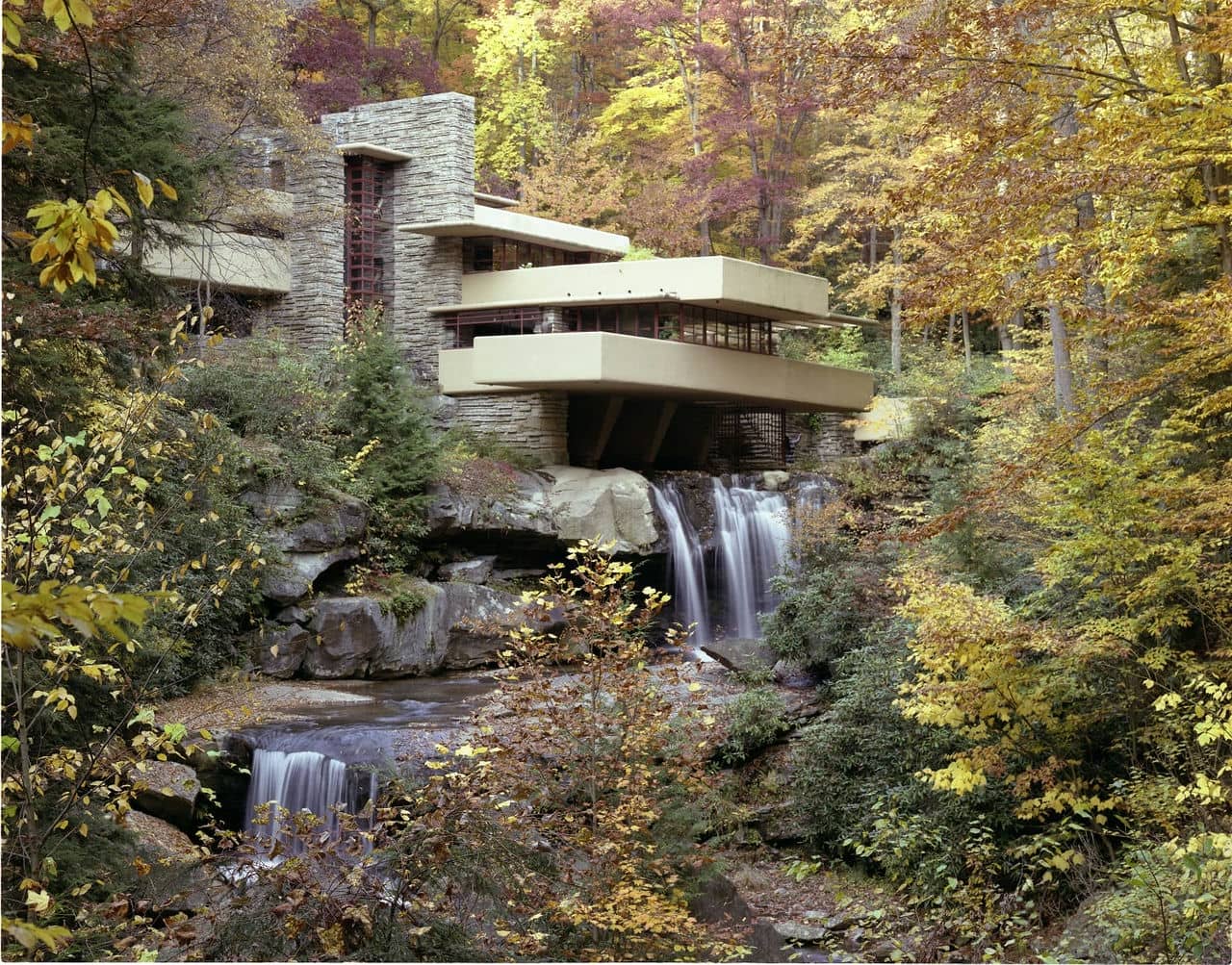
The completion of Fallingwater in 1937, chronicled in Time magazine, brought Wright out of obscurity and launched the last creative period of his long career. It remains among his most famous and acclaimed works. The Kaufmann family used Fallingwater as a weekend retreat until 1963 when it was entrusted to the Western Pennsylvania Conservancy and opened as a public museum. The building’s daring cantilevers did suffer from some structural problems over time but have been reinforced. Fallingwater is renowned as a masterpiece of modern architecture and organic design, named the “best all-time work of American architecture” in a 1991 poll. Today, it is a National Historic Landmark and, as of 2019, a UNESCO World Heritage Site.
What architectural style is most prominent in the Fallingwater?
Fallingwater’s most prominent architectural style is Organic Architecture, which he developed and refined over his long career. Organic architecture seeks a harmonious union between the designed building and its natural site, almost as if the architecture grows naturally from the landscape. Wright embraced modern technologies like reinforced concrete and steel to achieve organic architecture but always used them to integrate the building with its surroundings. The solid horizontal lines of the cantilevered concrete terraces echo the rock ledges of the waterfall below. One of Fallingwater’s most dramatic gestures is incorporating an existing rock outcropping into the massive stone fireplace. Wright’s careful attention to detail using natural materials and forms reflects his organic approach. He used local sandstone quarried from the site, echoing the colors and textures in the area’s rock formations and autumn foliage. The exterior paint color was specially mixed to complement the environment. Interior furnishings repeat wood textures, tree branch motifs, and stone elements that mirror the surroundings. Architecture and nature are thoroughly integrated, and neither can be separated.
What structural engineering principles were employed in the construction of the Fallingwater?
Several structural engineering principles were employed in the construction of Fallingwater. Firstly, Frank Lloyd Wright used reinforced concrete cantilevers to create the impression of the terraces floating over the waterfall. Wright could cantilever the foundations up to 15 feet (4.6 meters) from the house without any visible means of support underneath. Secondly, Wright worked closely with engineers to calculate the steel reinforcement needed within the concrete terraces to support the cantilevers. Vertical steel columns were also embedded within the chimney and stone walls to help resist tension and shear forces. Lastly, local sandstone was used to construct the central stone chimney and walls that anchor the structure. Sandstone also offered durability and fire resistance around the massive central hearth. The principles allowed the architecture to emerge from the site itself poetically.
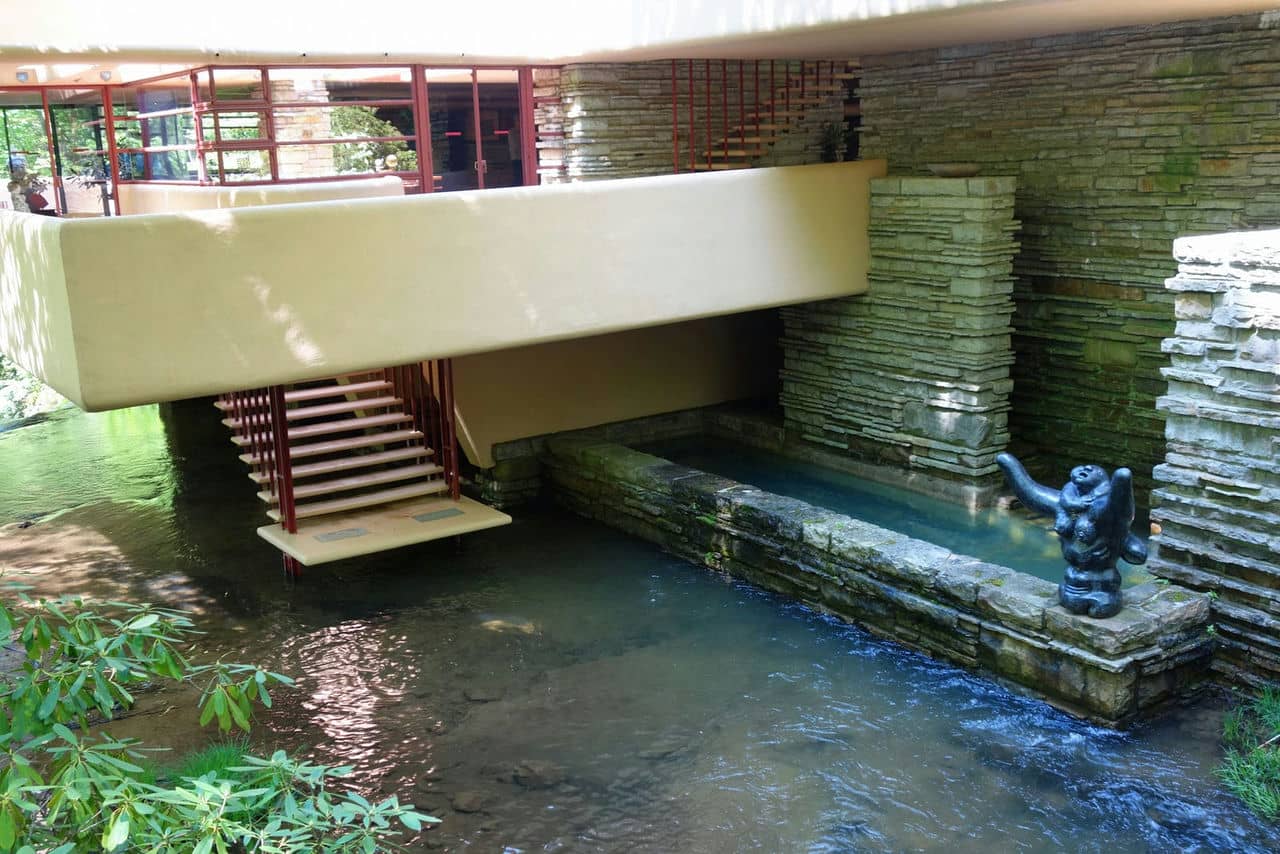
Who designed the Fallingwater?
The architect of the iconic Fallingwater house is Frank Lloyd Wright, one of the most famous and influential American architects of the 20th century. Wright designed Fallingwater in 1935 for Pittsburgh businessman Edgar J. Kaufmann Sr and his wife, Liliane. It was built between 1936 and 1939 as a weekend retreat home directly over a waterfall in rural Pennsylvania. Wright was known for developing a distinctly American style of architecture he termed “organic architecture.” This approach seeks to harmonize buildings with their natural settings. Wright embraced new materials like steel and concrete to create flowing, open interiors in union with the surrounding landscape. He is recognized as the greatest practitioner of the Prairie School style, with its strong horizontal lines echoing the flat topography of the Midwest. Some of Wright’s most acclaimed designs include the Robie House in Chicago, the Guggenheim Museum in New York City, and his own home and studio, Taliesin West. The Western Pennsylvania Conservancy has owned and operated Fallingwater as a public museum since 1963, one year after Edgar Kaufmann Jr donated it. The building’s iconic blend of modern style and natural materials within its forested landscape has captivated architects and the public for over 80 years. In 1991, American Institute of Architects members voted it “the best all-time work of American architecture.”
What are the historical design influences visible in the Fallingwater?
There are several historical design influences visible in the architecture of Fallingwater. Firstly, Organic architecture integrates buildings into their natural settings, almost as if the architecture grows naturally from the landscape. This philosophy is evidenced in how Wright situated Fallingwater directly over the waterfall and used local materials that blend with the surroundings. Secondly, Wright was influenced by Japanese architecture, especially in his desire to unite architecture and nature. The terraces’ horizontal solid lines and earth-tone colors echo elements found in traditional Japanese temples and pagodas on hillsides. The open corner windows also help visually dissolve boundaries between interior rooms and the surrounding forest in a Japanese aesthetic. Lastly, Wright borrowed ideas from the European modernists he initially denigrated, like Walter Gropius and Le Corbusier. The extensive use of industrial materials like concrete and steel and the cantilevered balconies projecting into space reveal inspiration from the International Style. However, Wright brought his organic sensibility to these modernist motifs through natural light and materials.
How has Fallingwater influenced the design of other buildings in Pennsylvania?
Fallingwater has influenced the design of other buildings in Pennsylvania in several ways. Firstly, Frank Lloyd Wright’s integration of architecture into the natural landscape is seen in various projects across Pennsylvania that utilize local materials, embrace natural settings, and open interiors to the outdoors. Secondly, Fallingwater demonstrated innovative uses of materials like reinforced concrete and steel, allowing for dramatic cantilevered forms. Other modern Pennsylvania buildings have experimented with cantilevers floating over landscapes, often at a smaller scale than Wright’s feat over Bear Run. Lastly, the international fame of Fallingwater put a spotlight on modern architecture in Pennsylvania. Its status as an architectural icon brought attention and tourism to the state. This likely encouraged clients to commission and architects to propose more adventurous contemporary designs across Pennsylvania, leading to greater aesthetic diversity. Even modest homes today will often have touches echoing Fallingwater, like expanses of glass, strong horizontal lines, and natural materials.
What purpose does the Fallingwater serve, and how does the design help?
The purpose of Fallingwater is to serve as a weekend retreat home for the Kaufmann family to escape urban life and connect with nature. Owner Edgar Kaufmann Sr. commissioned Frank Lloyd Wright to design a home directly over the family’s beloved waterfall in rural Pennsylvania’s Bear Run Nature Reserve. Wright anchored a series of thin reinforced concrete floors cantilevered out from a central stone chimney core, making them appear to float over the waterfall. This daring move integrates home and site, fulfilling Wright’s aim for the Kaufmanns to “live with the waterfall.” The solid horizontal lines of the terraces echo the natural rock ledges, while the earth tone color blends with the landscape. Corner windows erase boundaries between rooms and the forest. An intimate stairway descends from the living room to the stream below. Even after Wright completed the iconic house in 1937, its design continued serving this retreat’s purpose. The Kaufmann family enjoyed Fallingwater as their weekend residence until 1963 when it was entrusted to the Western Pennsylvania Conservancy. It opened as a public museum in 1964, but the design still enables visitors to experience oneness with nature, finding a retreat from modern life by “living with the waterfall.” Over 80 years later, Fallingwater’s innovative organic design continues serving its original purpose.
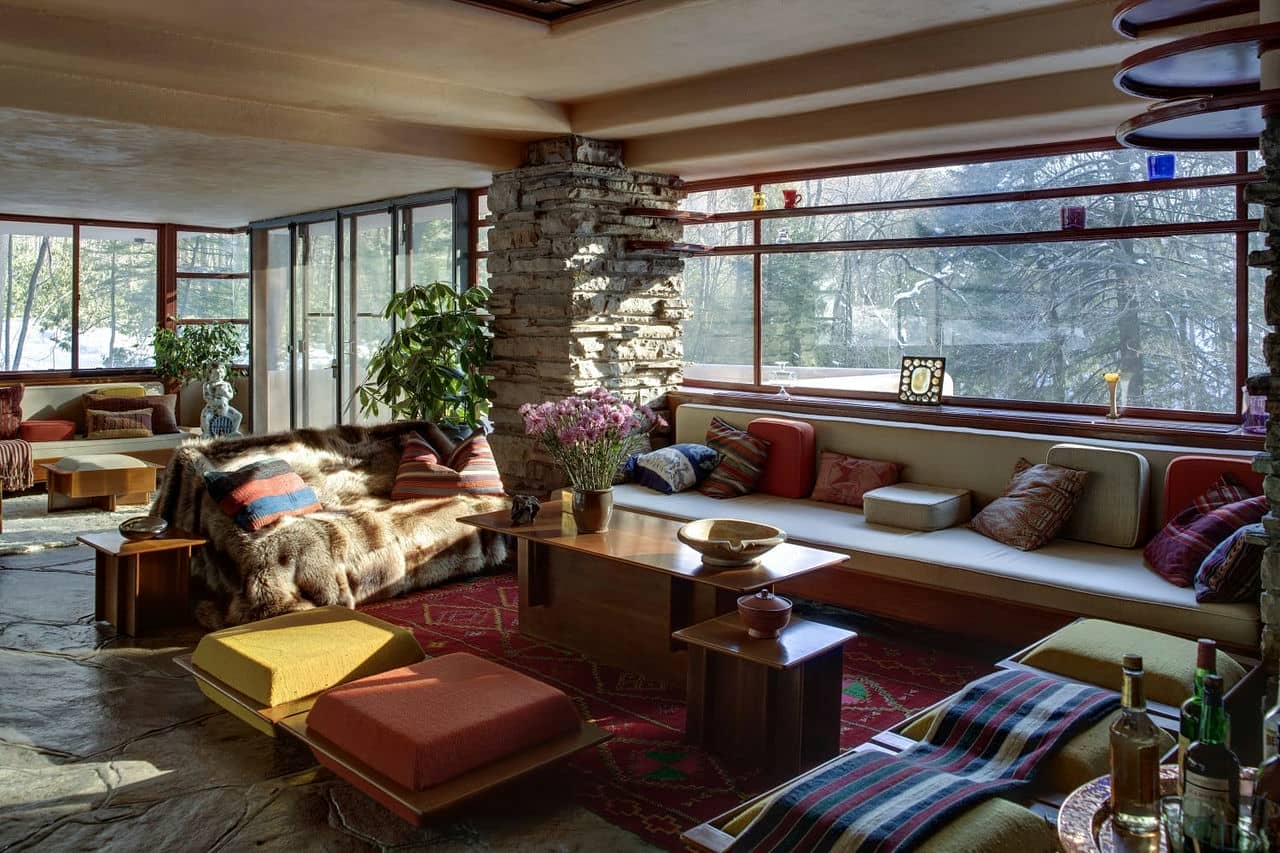
How is the Fallingwater maintained?
Fallingwater requires extensive ongoing maintenance and preservation efforts to keep it standing. Firstly, the structural integrity of Fallingwater’s daring cantilevers has been an ongoing issue requiring continual monitoring and periodic repairs. Cracks in the concrete floors were noticed soon after construction. Steel cables were later embedded to reinforce the cantilevers, but they continued sagging under their weight over the decades. In the early 2000s, a $11 million (€10 million, £8.5 million) stabilization project was undertaken to install a post-tensioning system of steel cables under the floors to arrest and partially reverse the sagging. Secondly, Fallingwater’s location, which spans a waterfall, results in extensive moisture and flooding inside the house. The Western Pennsylvania Conservancy has worked to waterproof the concrete floors and terrace walls to reduce water intrusion. Lastly, preserving and maintaining Fallingwater’s original interior and exterior building materials is ongoing. The Western Pennsylvania Conservancy follows Frank Lloyd Wright’s meticulous specifications for concrete mixes and paint colors when repairs are needed. The Conservancy also carefully preserves abundant wood features, including the wooden hatch over the living room stairs and custom built-in furnishings.
How does the Fallingwater reflect cultural and contextual relevance in their design?
Fallingwater reflects cultural and contextual relevance in its design in several ways. Firstly, architect Frank Lloyd Wright embraced his “organic architecture” concept to create a harmonious union between the house and its natural setting. Using local materials like native sandstone walls and earth-tone concrete colors further integrates the building into its physical and cultural context within rural Pennsylvania. Secondly, this reflects the cultural appreciation in early 20th century America for escaping urban life to connect with nature. The open floor plan, corner windows, and stairway down to the stream all contextually make the falls an integral part of living at Fallingwater. Lastly, Wright incorporated modernist elements like concrete, steel framing, and open interiors within his organic philosophy. This allowed him to create an innovative design relevant to 1930s architecture while honoring the site’s natural beauty. The synthesis reflects the cultural tension between industry and nature central to America’s identity.
What architectural trend or movement does the Fallingwater represent?
Fallingwater represents the concept of organic architecture. Organic architecture aims to create buildings in harmony with nature, situated and designed to complement, reveal, and integrate with their surrounding landscapes. This idea reached its fullest expression and refinement in Wright’s design for Fallingwater. The home extends the rock outcroppings as if growing from its wooded setting. Fallingwater demonstrates critical aspects of achieving organic architecture. Wright used on-site materials like native sandstone and timber to blend the building and land. The open floor plan connects interior rooms to the enveloping forest through expansive glass walls and corner windows that erase boundaries. The house fulfills this goal of organic design. The result is a weekend retreat home for the Kaufmann family that emerges from the rock, forest, and flowing water that have shaped the site for centuries. Fallingwater has influenced generations of architects by integrating modern style and materials into the ancient rhythms of nature.
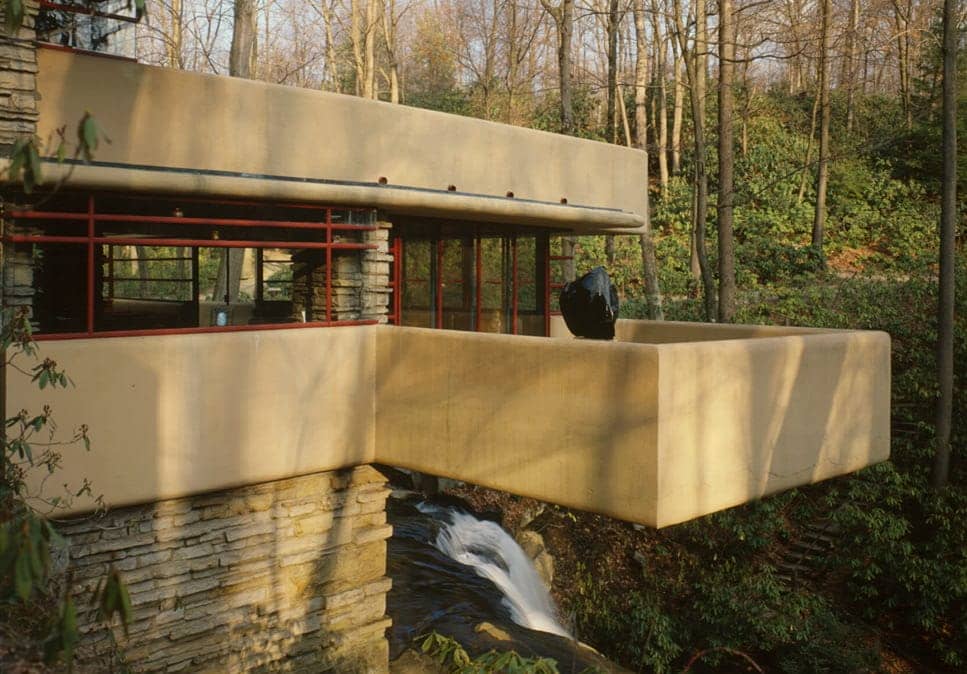
What are the challenges faced during the restoration of the Fallingwater?
The restoration of Frank Lloyd Wright’s iconic Fallingwater house has faced several challenges. Firstly, the structural integrity of the daring concrete cantilevers supporting the terraces has been an ongoing issue. Cracks were noticed soon after construction, and the cantilevers continued sagging under their weight over time. This required extensive monitoring and analysis to stabilize the floors and prevent potential collapse. A $11 million post-tensioning stabilization project was undertaken in the early 2000s to reinforce the failing cantilevers. Secondly, Fallingwater’s direct integration with the natural waterfall setting has led to continual moisture and flooding problems inside the house. Dehumidification systems run constantly, yet after heavy rains, the creek still rises and floods the interior. This requires extensive cleanup and drying efforts to mitigate water damage and mold growth. Waterproofing the concrete floors and walls has been a continual process to limit water intrusion. Lastly, preserving Fallingwater’s original 1930s building materials, custom details, and interior furnishings have posed challenges. The building’s sensitivity to its natural setting has posed inherent challenges.
How does Fallingwater comply with contemporary safety and accessibility standards?
Fallingwater faces challenges in fully complying with modern safety and accessibility standards due to its historic design. Firstly, the open terraces cantilevered over the waterfall, creating inherent safety issues. No guardrails protect visitors as they walk out onto the narrow concrete balconies above the cascade. This design contradicts typical safety codes, but railings would ruin Wright’s vision. Secondly, the stairs in Fallingwater pose accessibility problems. Multiple staircases throughout the three-floor home without options for ramps or lifts. Lastly, Fallingwater’s location links it to the natural environment. The humidity and periodic flooding from the waterfall stream cause continual maintenance issues. Keeping the structure intact against such elemental forces is an ongoing struggle, even with climate control systems. Preserving safety is a constant concern. Western Pennsylvania Conservancy continues working to balance guest safety with maintaining the iconic building’s character.
Are there any specific tours for architects or architecture enthusiasts visiting Fallingwater?
Yes, Fallingwater offers several tours tailored for architects and architecture enthusiasts. Fallingwater provides specialized tours for architects, architecture students, and others with an avid interest in design. The main tour option is the In-Depth Tour, offered daily from April through November. This 2-hour guided tour delves deeper into Wright’s design philosophy and the technical aspects of constructing Fallingwater. Guides discuss Wright’s concept of organic architecture in situ, explaining how he integrated the home with its natural waterfall setting. The tour also explores the functional layout and unique custom details Wright incorporated. Fallingwater’s Focus Tour provides an ideal experience for small groups of architects. This is a private 3-hour tour customized to the group’s interests in architecture, engineering, or Wright’s work. Fallingwater also offers Insight/Onsite, an immersive 3-day workshop for architects, engineers, and other design professionals to study the house in-depth.
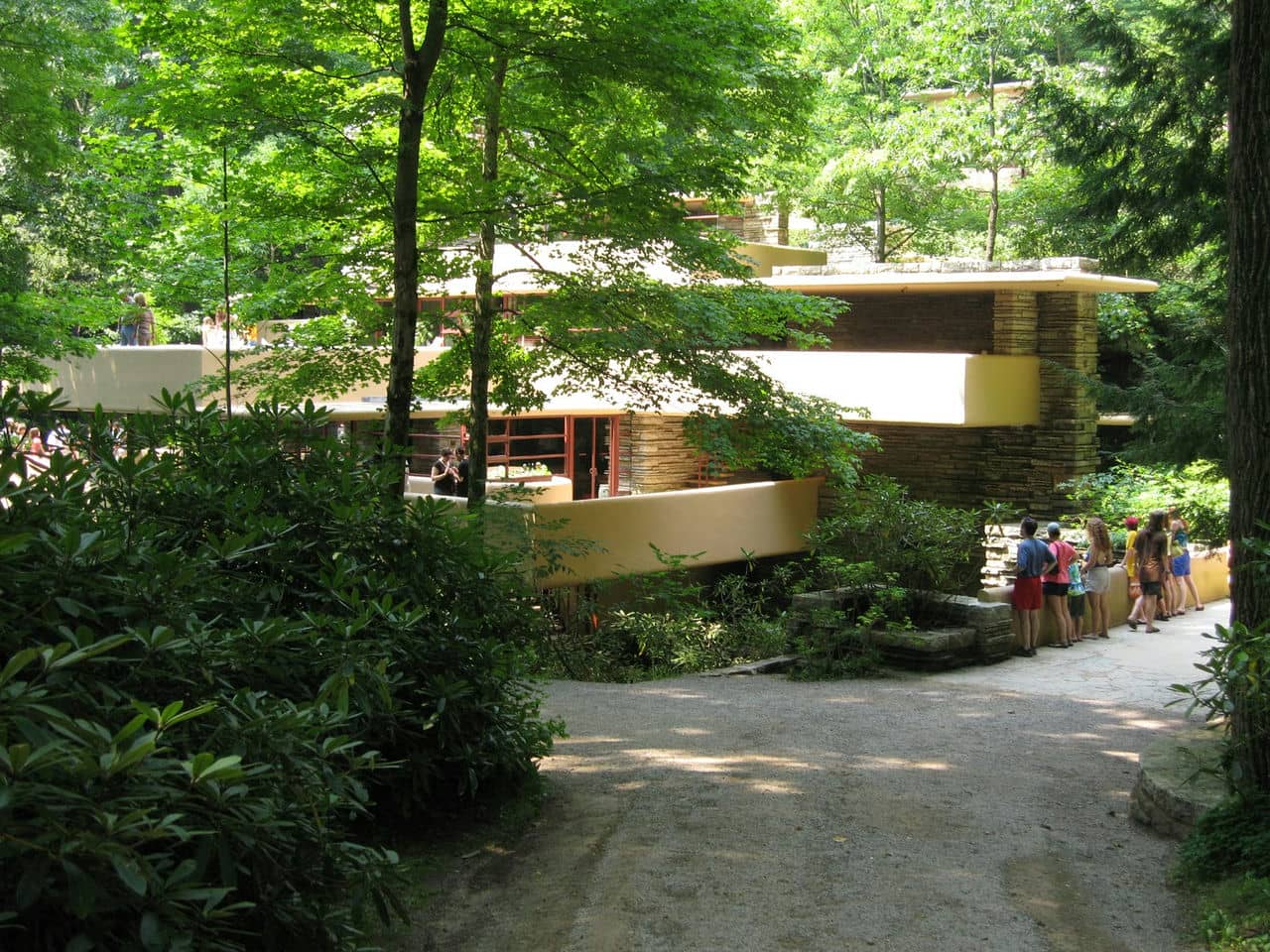
What lessons can architects learn from the design and construction of the Fallingwater?
Architects can learn several lessons from the design and construction of Frank Lloyd Wright’s iconic Fallingwater. Firstly, architects should integrate buildings into their natural settings, as Wright did by situating Fallingwater directly over a waterfall. This “organic architecture” philosophy of harmonizing architecture and nature through careful design considerations such as site analysis and material selection creates more unified, poetic projects. Secondly, architects must balance design creativity with structural realities, as seen in the ongoing sagging issues with Fallingwater’s cantilevers. Lastly, architects should utilize materials present in a site where possible, as Wright did with the native sandstone walls that visually blend Fallingwater into the surrounding rock outcroppings. Fallingwater’s example will continue influencing architects to integrate built forms into environments for generations.
What are the best architectural landmarks in Pennsylvania to visit as an architect?
Listed below are the best architectural landmarks in Pennsylvania to visit as an architect:
- Fallingwater, Mill Run: Fallingwater is a must-visit for architects exploring organic architecture and its integration with nature. The house dramatically cantilevers over a waterfall, showcasing Wright’s philosophy of designing structures with humanity and their environment. Fallingwater is celebrated for its innovative use of materials, such as stone and concrete, and its strong visual connections to the surrounding landscape. The design’s dynamic and fluid form challenges traditional architecture and has made it an iconic piece of 20th-century architecture.
- Philadelphia City Hall: Philadelphia, City Hall is a recognizable landmark for architects interested in Second Empire architecture. Completed in 1901 and designed by John McArthur Jr. and Thomas Ustick Walter, it was the tallest habitable building in the world until 1908. The building’s intricate masonry, grandiose scale, and elaborate decoration exemplify the Second Empire style. Its central tower, topped with a statue of William Penn, is a key feature of the Philadelphia skyline and offers insights into the architectural ambitions of the late 19th century.
- The Barnes Foundation, Philadelphia: The Barnes Foundation, designed by Tod Williams and Billie Tsien and opened in 2012, is a modern architectural landmark for architects studying museum design and urban context. The building’s design focuses on natural light, textural materials, and creating a contemplative space for viewing art. Its layout and use of materials, such as Negev stone and oak, provide a warm and inviting environment. The integration of landscape elements, like a reflecting pool and garden, further enhances the visitor experience, making it a modern masterpiece in museum architecture.
- Eastern State Penitentiary, Philadelphia: Eastern State Penitentiary, designed by John Haviland and opened in 1829, is significant for architects interested in the evolution of prison architecture and the use of architecture for social reform. The penitentiary’s radial plan was revolutionary, allowing for solitary confinement and a focus on penitence, a novel concept at the time. The Gothic-inspired architecture, with its imposing walls and vaulted hallways, was intended to inspire remorse in inmates. It is a haunting example of early American penal architecture and its societal implications.
- The Fisher Fine Arts Library (formerly Furness Library), University of Pennsylvania: The Fisher Fine Arts Library, designed by Frank Furness and completed in 1891, is an essential site for architects studying the Victorian Gothic Revival and the American Aesthetic Movement. Furness’s design is noted for its bold and unconventional style, combining Gothic and Romanesque architectural elements with interior decoration and an extensive use of color and texture. The building’s layout emphasizes natural lighting and open spaces, offering a unique perspective on late 19th-century library design.


